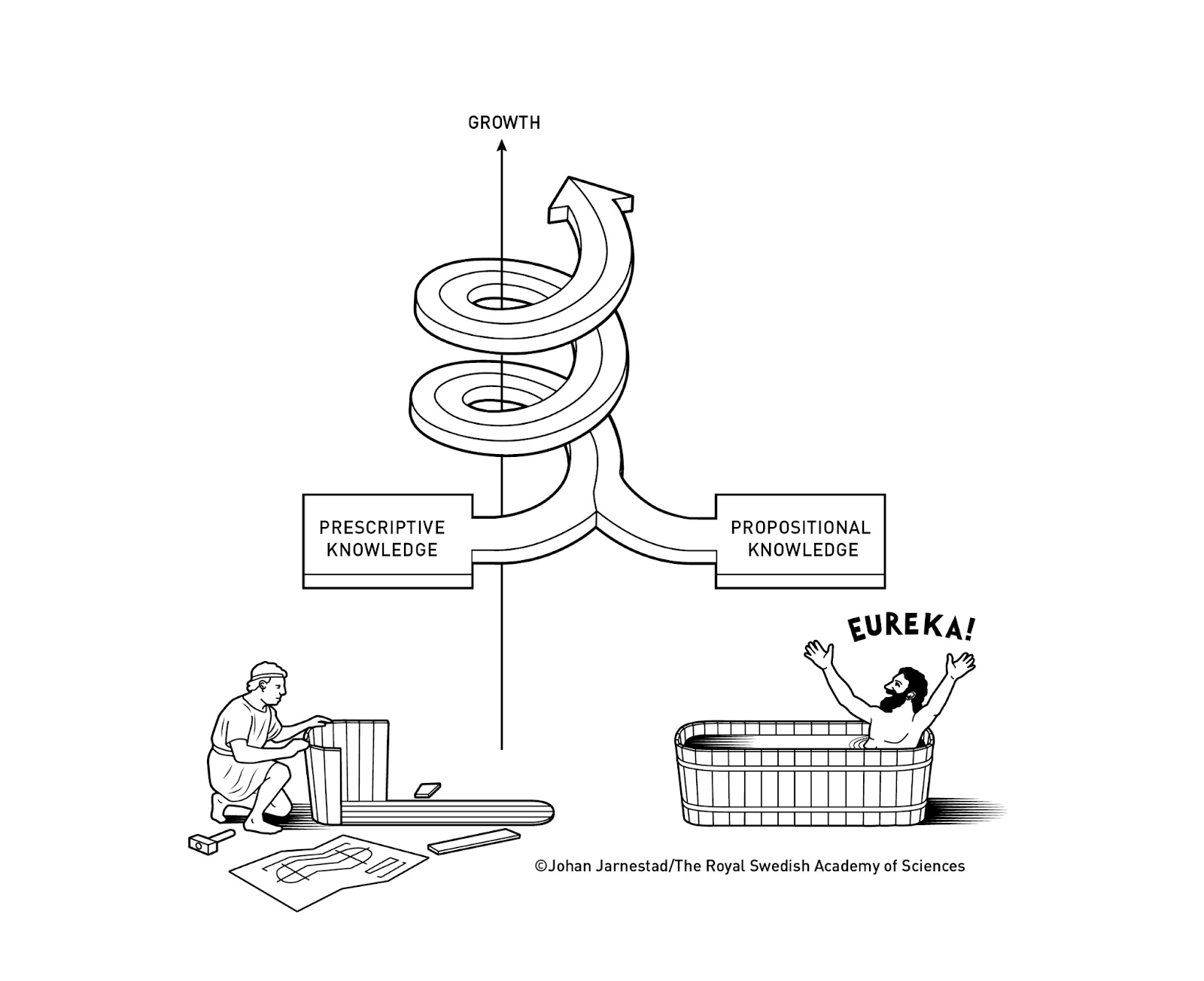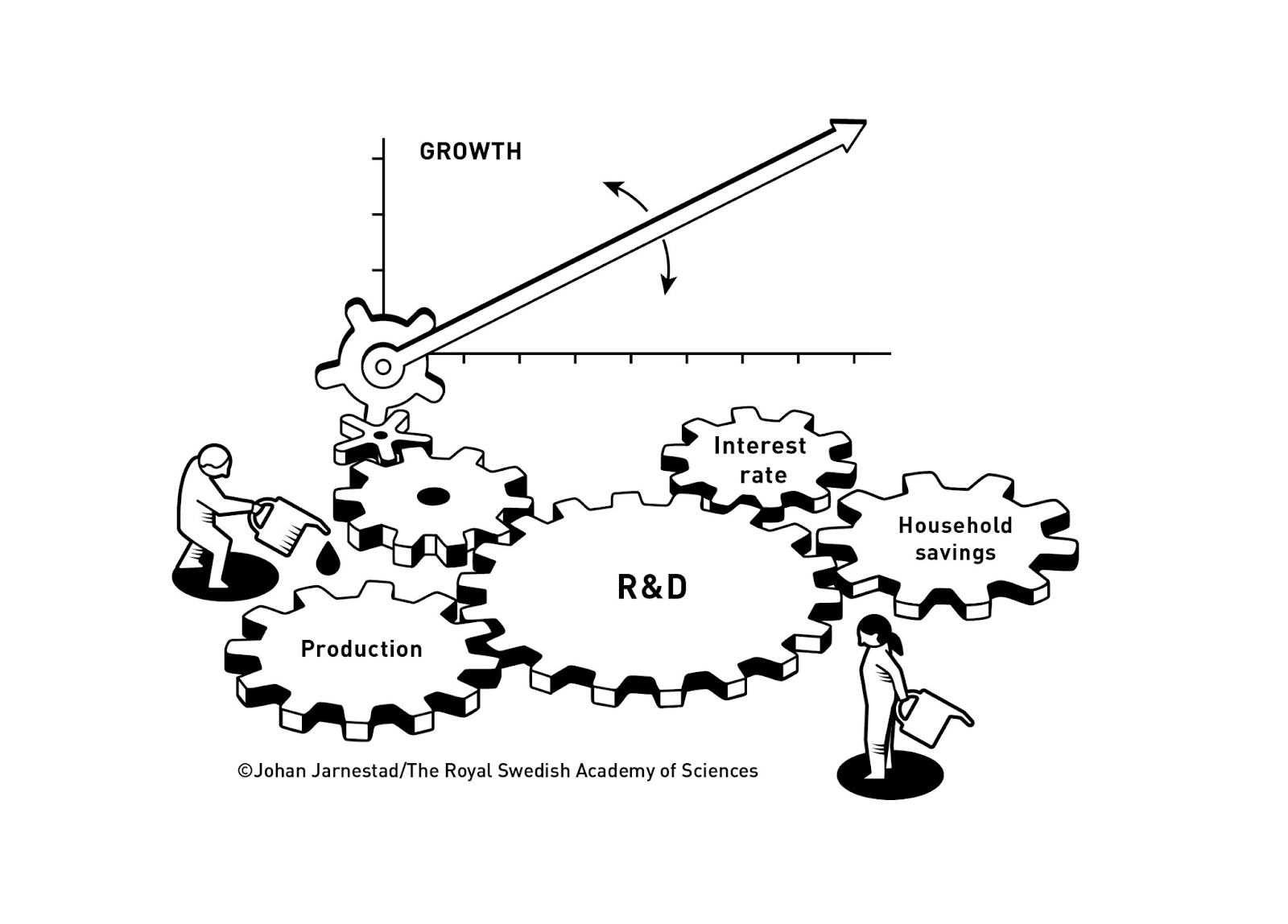Joel Mokyr, Philippe Aghion and Peter Howitt won the 2025 Nobel economics prize for "having explained innovation-driven economic growth.
On October 13, 2025, the Royal Swedish Academy of Sciences announced the winners of the 2025 Nobel Prize in Economics, officially known as the Sveriges Riksbank Prize in Economic Sciences in Memory of Alfred Nobel.
The award was jointly given to Joel Mokyr, Philippe Aghion, and Peter Howitt for their pioneering work in explaining innovation-driven economic growth. The prize-awarding body stated that the laureates have explained that sustained growth cannot be taken for granted. Economic stagnation, not growth, has been the norm for most of human history.
Their work shows that societies must be aware of and counteract threats to continued growth. This recognition addresses one of the most significant questions in economics: why modern economies grow while historical ones stagnated.
The Discovery: Two Halves of a Complete Theory
The 2025 Economics Nobel Prize was divided into two halves, reflecting two complementary approaches to understanding growth. Mokyr received half the prize for identifying the prerequisites for sustained growth through technological progress. Aghion and Howitt jointly received the other half for their theory of sustained growth through creative destruction.
This division reflects the complementary nature of their contribution. Mokyr explains when and where self-sustaining growth becomes possible by examining historical and cultural conditions. Aghion and Howitt explain how growth maintains itself through mathematical modeling of competition and innovation.
Joel Mokyr: The Foundation for Sustained Growth
Joel Mokyr explained why brilliant inventions before the modern era failed to trigger continuous development. His work in sustainable economic development shows that innovative discoveries remained largely isolated because societies lacked the framework to build upon them systematically.
Mokyr identified two types of knowledge required for sustained progress: prescriptive knowledge (know-how about what works) and propositional knowledge (scientific understanding of why it works). Before the Industrial Revolution, societies had scattered know-how but lacked scientific explanations.

Mokyr's research identified three prerequisites for escaping this cycle.
- Society must facilitate the joint evolution of scientific principles and practical applications. For example, the 16th and 17th centuries witnessed the Scientific Revolution which catapulted the Industrial Revolution.
- Society needs skilled artisans and entrepreneurs capable of transforming ideas into products.
- Society must maintain institutional openness to new ideas and tolerance for disruption that follows technological change. For example, during the Enlightenment phase, new institutions like the British Parliament reduced the resistance to change.
Aghion and Howitt: Engine of Creative Destruction
Philippe Aghion and Peter Howitt formalized how growth perpetuates itself through creative destruction. Their 1992 paper transformed Joseph Schumpeter's concept into a rigorous analytical tool.
Creative destruction describes the process where new innovations replace older technologies. For example, smartphones replaced flip phones and digital cameras made film cameras obsolete. Aghion and Howitt's 1992 model showed this isn't just change but the mechanism driving sustained growth.
A company invests in R&D to create a superior product, capturing temporary monopoly profits. These profits attract competitors who develop better products, displacing the current leader. The cycle repeats, with each innovation building on previous ones. This model belongs to the endogenous growth theories, where growth comes from within the economic system through deliberate innovation.
The Aghion-Howitt model reveals that temporary monopoly power is essential for growth. Companies invest in R&D only because they expect to dominate the market temporarily and recoup their investment. Without this incentive, innovation wouldn't happen. However, the monopoly must be temporary. If dominant firms block new competitors, the innovation cycle breaks down and growth stalls.

Innovation's Significance for Economic Development
Innovation is the fundamental driver of modern economic prosperity, transforming how societies create wealth and escape historical stagnation. The 2025 Nobel laureates demonstrated that sustained growth occurs only when economies systematically build upon discoveries through continuous technological advancement.
Innovation enhances productivity, enabling more output from the same resources, which raises living standards. Through creative destruction, new technologies replace outdated ones, creating a self-sustaining growth cycle where competition drives continuous improvement. Innovation also generates high-value jobs, solves critical challenges like climate change and healthcare, and provides competitive advantages in global markets.
India's Innovation Contributions
India has emerged as a significant innovation hub globally. The country ranks among the top nations for patent filings in pharmaceuticals and information technology. India's digital innovations like UPI (Unified Payments Interface) have revolutionized financial inclusion, processing billions of transactions monthly.
India is also leading in affordable innovation, developing low-cost medical devices, frugal engineering solutions, and space technology at competitive costs. India's IT sector drives global digital transformation, while its pharmaceutical industry supplies affordable medicines worldwide, demonstrating innovation's development impact.
Contemporary Relevance: AI, Trade, and Green Innovation
The 2025 laureates' framework addresses current economic challenges facing India and the world. Aghion has warned that artificial intelligence companies could dominate everything and inhibit potential entry of new innovators.
The network effects inherent in AI mean a few companies could establish unbreakable market dominance. The solution requires strict competition policies that prevent current leaders from blocking future entrants while preserving their incentive to innovate.
Aghion also criticized new tariffs and deglobalization as threats to global expansion. Protectionist policies insulate domestic incumbents from creative destruction posed by international competitors, directly threatening sustained growth. This echoes Mokyr's historical finding that openness to new ideas and trade is a prerequisite for sustainable economic development.
The transition to sustainable energy systems requires massive innovation. However, restrictive monetary policy, which raises interest rates to combat inflation, disproportionately hurts smaller innovative firms attempting to disrupt established polluting technologies.
Conclusion
The Economics Nobel Prize 2025 honors work that explains how humanity escaped historical stagnation and what threatens to reverse that achievement. Mokyr, Aghion, and Howitt show that modern growth is a turbulent process of continuous creation and destruction, dependent on specific cultural foundations and active governance.
As India navigates challenges in technology regulation, trade policy, and the green transition, the laureates' framework provides essential tools. Understanding endogenous growth theories helps evaluate whether policies foster or hinder the innovation cycle.
The lesson from their work is clear: prosperity isn't automatic, openness isn't optional, and managing the turbulence of progress requires sophisticated, evidence-based policy interventions.

Master Digital Age Governance & Technology Trends with VisionIAS Comprehensive Current Affairs →
Economics Nobel Prize 2025 FAQs
1. Who won the Economics Nobel Prize 2025?
Ans. Joel Mokyr, Philippe Aghion, and Peter Howitt.
2. What did the 2025 Economics Nobel laureates explain?
Ans. Innovation-driven economic growth.
3. Why did Joel Mokyr win the Nobel Prize in Economics?
Ans. For identifying prerequisites for sustained growth through technological progress.
4. What are the two types of knowledge Mokyr identified for sustained growth?
Ans. Prescriptive knowledge (know-how) and propositional knowledge (scientific understanding).
5. What economic theory did Aghion and Howitt develop?
Ans. Endogenous growth theory through creative destruction.